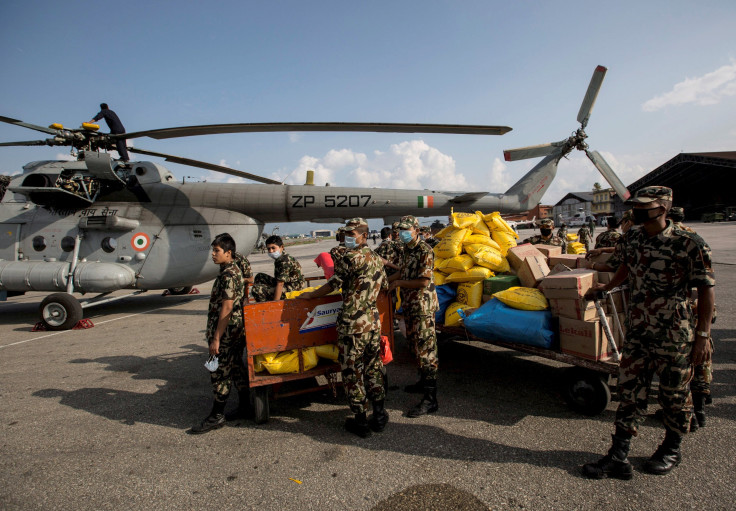Nepal Earthquake 2015: Relief Material Piles Up At Airport As Imminent Monsoon Brings Threat Of Diseases

While thousands of victims of last week’s devastating earthquake in Nepal continue to wait for aid, stacks of relief material are being held up at the country’s only international airport in Kathmandu, the United Nations said on Saturday. The powerful 7.8-magnitude earthquake, which is estimated to be the deadliest to hit Nepal in 80 years, has so far killed more than 6,700 people.
While Nepal's government said on Friday that material such as tarpaulins and tents were exempted from import taxes, Jamie McGoldrick, the U.N. Resident Representative in Nepal called on the nation's government to relax customs restrictions to allow better access to a flood of relief goods from other countries, including India, China, the U.S. and the U.K., Reuters reported.
“They should not be using peacetime customs methodology,” McGoldrick told Reuters, adding that relief materials are stacked up at Tribhuvan International Airport, instead of being delivered to the quake victims.
Meanwhile, Nepal's government criticized the nature of supplies being sent and called for more financial aid if donors were unable to provide immediate necessities. “We have received things like tuna fish and mayonnaise. What good are those things for us? We need grains, salt and sugar,” Nepal's Finance Minister Ram Sharan Mahat reportedly said, according to the Associated Press.
Meanwhile, the U.S. military has signed an agreement with Nepal’s government, under which six military aircraft and 100 marines with lifting equipment would arrive in the country to assist relief workers, Brigadier General Paul Kennedy of the U.S. Marine Corps told Reuters, adding that the marines would also deal with clearing the growing pile of aid material.
In addition to customs bottlenecks, a shortage of supply trucks and drivers has also hampered efforts of speeding up the delivery of relief material to remote areas. “Our granaries are full and we have ample food stock, but we are not able to transport supplies at a faster pace,” Shrimani Raj Khanal, a manager at Nepal Food Corp., told Reuters.
As many victims in remote villages still await relief material, there is only “a small window of time” for aid workers to take the necessary measures to protect people from deadly disease outbreaks before the monsoon season starts in Nepal, Reuters reported, citing a senior official at the United Nations Children's Fund (Unicef).
According to Rownak Khan, Unicef's deputy representative in Nepal, wet and muddy conditions brought on by the rainy season -- which normally runs from June through September -- would worsen ground conditions in the country.
“We must remain vigilant in our efforts to prevent and control communicable disease outbreaks, like diarrhoea,” Roderico Ofrin, head of the World Health Organization’s emergency response, said in a statement, obtained by Reuters.
© Copyright IBTimes 2025. All rights reserved.






















